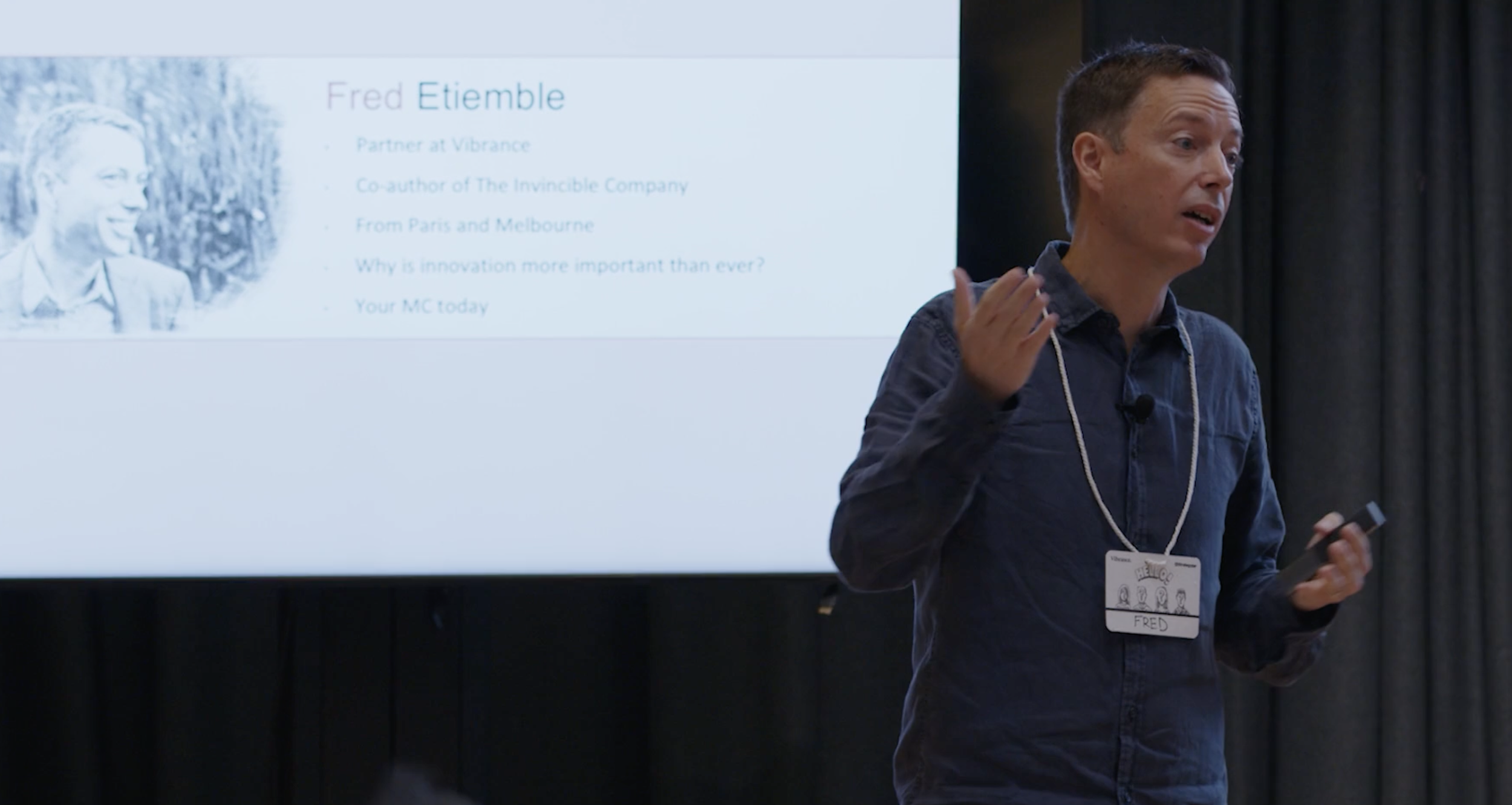What would metrics for innovation truly enable?
Over the course of seven months across 2017 and 2018, I led the co-creation of Strategyzer innovation metrics with Alex Osterwalder, Yves Pigneur, three multinational companies and one Australian SME.
I interviewed many executives overseeing innovation programmes/portfolios, and coaches helping teams of intrapreneurs in the trenches. They shared how they assess and measure progress of an innovation initiative today. We were particularly interested in the early stages of a project, from the initial idea to a validated business case, even before customer acquisition and revenues. Those interviews confirmed beyond doubt that no one really knew how to measure progress of an innovation project in its early stages. It seemed to be a widespread problem in organisations across the globe with no known solution.
“Many clients I have worked with are not really measuring anything. They invest money in innovation in the hope that gold will come out on the other end.” Dan Toma, co-author of “The Corporate Startup”
THE POTENTIAL
Corporate innovation exists to build new growth engines. It starts with the exploration of new business ideas that could create future value for the organisation in the mid to long-term. This investment in innovation is fuelled by the successes of existing business models under the stewardship of executive teams that optimise value creation in the here and now.
Problems appear when executives, with the best intentions, start applying their “execution” know-how (thinking patterns, frameworks, tools and execution metrics) in corporate innovation.
Alex Osterwalder highlighted in a blog post the issues that arise when executives use execution metrics for innovation, and hence the need for a new set of metrics for innovation.
Indeed, in the absence of those innovation metrics, what are some of the most common problems in corporate innovation today?
First, hesitation and doubt seem to be common feelings in innovation governance boards. This can lead to absent or delayed decision-making. When working on current business, executives can easily access data on known metrics (ROI, EBITDA, market share, etc.) and use those metrics to make decisions, or justify them. But when having to make decisions on innovation options, these metrics are not there, which can make decision-makers very uncomfortable. Doubt can cause executives to hesitate to finance a promising innovation project and continuously push back decisions.
This difficulty to assess progress of innovation initiatives can have dire consequences. Too often, corporate innovation initiatives start with great enthusiasm only to finish in utter disappointment. At one point or another, executives feel disappointed with the results from their organisation’s innovation engine. They see teams spinning their wheels without making any progress. They are concerned that money invested in the innovation engine might be thrown out the window. "Shouldn’t that money go to projects with a clear ROI in the execution side of the business?”, they may ask.
Executives are the stewards of the organisation’s resources and have to optimise value created by the existing business model(s). Frustration with early results of the innovation engine can reinforce a short-term bias. When those executives pass the threshold where they perceive innovation as destroying value rather than creating future value, then the days of corporate innovation in that organisation are counted.
Even companies that remain committed to investing in innovation projects have to make do with some serious limitations in decision-making.
“Usually, my (company Venture Fund’s) partners would ask the innovation teams to walk them through their thinking.” Nick Rakis
For anyone overseeing an innovation portfolio, measuring progress of an initiative in its early stages is more art than science, and executives in this field base their assessment of progress and subsequent investment decisions on a combination of personal experience and gut feel. No need to say this can lead to pretty inconsistent results.
Using irrelevant execution metrics, stopping everything out of frustration, or having to trust your gut feel. The above examples show observable consequences of this methodological vacuum. For all the considerable progress that was made in the 21st century in innovation and entrepreneurship with customer development (Steve Blank), lean startup (Eric Ries) and business model thinking (Alex Osterwalder) we’re still missing the framework that would help executives make better decisions in early stages of innovation initiatives.
PROTOTYPING A SOLUTION
Hence the challenge we set ourselves with this project: to build a working prototype of an innovation metrics framework, with the help of three multinational companies and a SME that could test it and provide immediate feedback.
I started with a research piece on “innovation accounting” practices, through a review of key publications and interviews of lean startup thought leaders. And despite the recent hype on “innovation accounting” I have to admit that I could not find anything specific to early stages of innovation projects, or any tool that would be immediately applicable, usable by a team on the ground. This was a clear confirmation that it was time to start our design and prototyping efforts.
To guide our design and prototyping work we developed the following design principles:
1. Identifying the most critical hypotheses is key to de-risk a new business idea.
2. To measure progress, one needs to be able to sort out untested hypotheses, and validated hypotheses within a business model.
3. Progress is a function of speed of experimentation and learning.
4. Desirability, Feasibility, Viability is a useful framework to guide experimentation, and “Desirability” is a widely accepted starting point to de-risk a new business idea.
5. Evidence is critical. (In the absence of it, innovation teams are excessively dependent on spinning a good story.)
6. De-risking a new business idea in a corporate environment is also dependent on the successful engagement of internal stakeholders.
7. Simplicity if a key enabler of adoption.
After four iterations and extensive feedback from the companies involved in the project, we landed on four simple metrics that should be tracked on every innovation initiative.
Those 4 metrics enable organisations to keep track of:
- TIME invested in new business idea,
- COST of exploring the idea,
- POTENTIAL in terms of expected financial return,
- PROGRESS, also called de-risking, of the idea so far.
Those metrics work both at the level of a single project and a complete portfolio. It’s been hard work to keep it that simple, especially for the PROGRESS metric, the one out of the four whose exact calculation process gave us the biggest headaches.
This working prototype of innovation metrics should already help companies answer some of the most pressing, and unresolved, questions in corporate innovation:
1. How do you measure progress (de-risking) on the journey from idea to a validated business case on an innovation project?
2. How do you know when to continue to fund an innovation project and when to kill it?
3. How do you measure how balanced an innovation portfolio is?
Strategyzer innovation metrics are now in the hands of the four participating companies and being used in their respective corporate innovation programmes. No doubt that many learnings, leading to more improvements of the framework, will come from their real-life experience.













